|
Athens Plato Academy Archaeological Site
The archaeological site of Plato Academy (Academia Platonos - Archaic name: Hekademia) is not easy to find; the easiest way is to catch a taxi and ask to be taken there, unless, of course, one chooses to get a guided tour through it. Unfortunately, not a large number of visitors (academics or not!) seem to be attracted to it. |
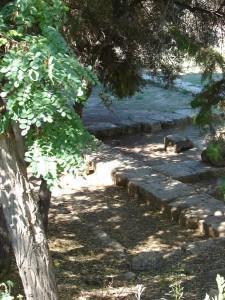 |
|
Plato Academy
|
In antiquity, it used to be outside the city walls of Athens, as we learn from Thucydides; it contained a sacred olive grove dedicated to Athena, goddess of wisdom, and many plane trees.
The place was named after Academos or Hecademos, a legendary hero who had his home by the banks of river Cephissus, at a distance of six stadia (192m X 6=1152 m or 576ft X 6=3456ft) from Athens. He was respected by friends and enemies alike and, whenever Attica was invaded, his land was spared.
In this serene place, Plato established his School of Philosophy. Even today, once within the archaelogical site's enclosure, one is impressed by the calmness and the serenity of the landscape, regardless of the fact that it is actually in downtown modern Athens and much tree-planting is yet to be done! One can only imagine what a superb place it used to be two and a half millenia ago, until the Roman Emperor Syllas invaded Attica in 86 BC and cut down all the trees within the 'perivolos' of the site. Besides Plato, a long series of renowned ancient scholars served as heads of the Academy: Speusippus (347-339 BC), Xenocrates (339-314 BC), Polemon (314-269 BC), Crates (ca. 269-266 BC), and Arcesilaus (ca. 266-240 BC). Later scholars included Lacydes of Cyrene, Carneades, Clitomachus, and Philo of Larissa ("the last undisputed head of the Academy"). Other notable members of the Academy included Aristotle, Heraclides Ponticus, Eudoxus of Cnidus, Philip of Opus, Crantor, and Antiochus of Ascalon.
Admission to the site is free, as it resembles a park and a children's playground rather than an archaeological site! The Greek authorities have so far spent negligible resources in preserving and signing the finds, as so much has been spent to disappropriate much of the 15 ha. of the total area. |
The prospective visitor should make sure to visit both parts of the site, as Kratylou Street still severs the park in two, and the excavations of the Geometrical Era Sacred House are in the second part. A large museum is to be built on the spot, but is not expected to be ready within the next five years.
(Photos by Michael Tziotis)
Click on any of the pictures to enlarge.
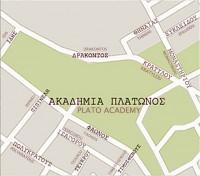
Plato Academy: Map of the Area
Notice Kratylou Street, which divides the site in two parts. The shed protecting the excavations that we show beneath lies in that smaller part beyond Kratylou Street. |
|
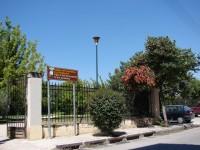
Plato Academy: One of the Entrance Gates to the site |
|
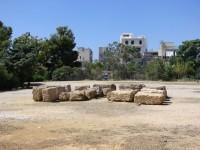
Plato Academy |
|
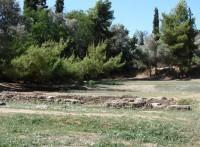
Plato Academy |
|
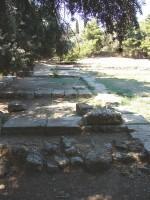
Plato Academy |
|
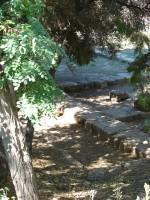
Plato Academy |
|
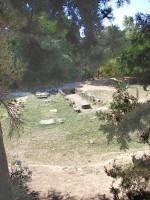
Plato Academy |
|
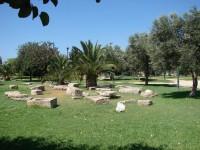
Plato Academy |
|
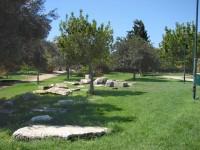
Plato Academy |
|
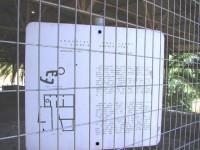
Plato Academy: Across Kratylou Str. dividing the site into 2 pieces, we come to the excavation grounds. Here is the Informative Sign within the shed built for protection of the finds of the excavations.
Greek Ministry of Culture
3rd Ephoreia of Antiquities
Archaeological Site of Plato Academy
Between the years of 1955-1963, during excavations realized here, the present important ancient buildingswere found, considting of the following:
A) The foundations of an Early-Helladic building (dated 2300-2200 BC), semielliptical in shape. It consists of an Entry Hall (Prodomus), a Main Room (Chamber) and a Rear Room (Opisthodomus). At the NE corner a pit was found filled with Early-Helladic sherds (fragments of clay pots).
B) A Sacred House (Iera Oikia) of the Geometric Period (8th century BC). Its walls were constructed in mud-brick and it consists of seven rooms and a Hall. Outside the house the remains of sacrifices have been found.
The excavator, Ph. Stavropoulos, considered that the Early-Helladic building must have been the settlement of the Founder of the area, the Hero Akademos, while the Sacred House was used for the continuation of the same cult during the Geometric period. |
|
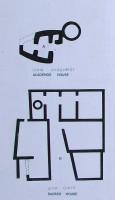
Plato Academy: Plan of the finds |
|
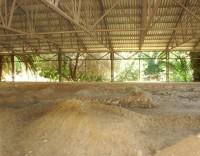
Plato Academy
Sacred House (Iera Oikia) of the Geometric Period (8th century BC). |
|
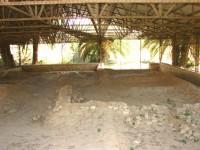
Plato Academy
The Sacred House (Iera Oikia) of the Geometric Period (8th century BC). |
|
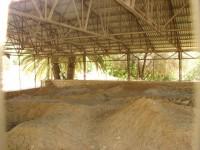
Plato Academy
The excavation site |
|
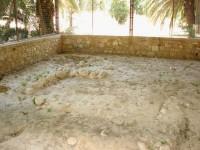
The foundations of an Early-Helladic building (dated 2300-2200 BC), semielliptical in shape
In the background corner there is the circular pit with Early-Helladic sherds (fragments of clay pots). |
|
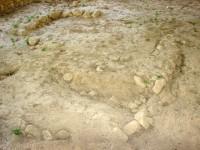
Plato Academy
The foundations of an Early-Helladic building. No big deal, one would think, forgetting that these are the foundations of all the Academic Institutions worldwide (etymologically, at least!) |
|
|
|
|
|



